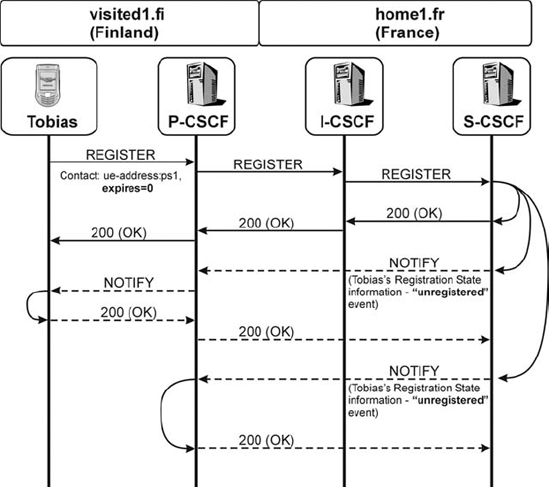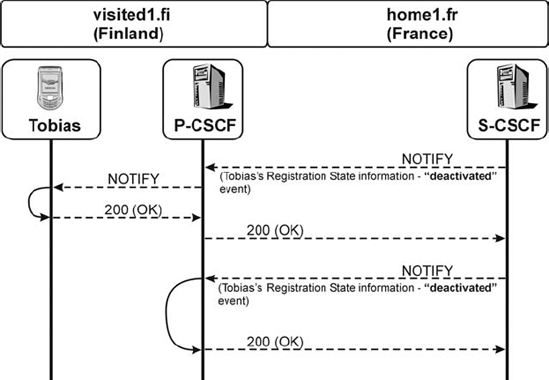10.14. De-registration
10.14.1. Overview
All things come to an end at some point, and this is also true for the registration of a user to the IMS. Tobias might want to be undisturbed after he called his sister and switches off his mobile phone. When doing so, his phone sends another REGISTER request to the S-CSCF, including all the information we have already seen, but indicating that this time it is for de-registration (Figure 10.15). The S-CSCF will then clear all the information it has stored for Tobias, update the data in the HSS and send a 200 (OK) response to Tobias's UE.
Sometimes the network sees the need to de-register the user (Figure 10.16): maybe the S-CSCF needs to be shut down or maybe Tobias is using a pre-paid card and has ran out of money. In these cases the S-CSCF would simply send another NOTIFY message with registration-state information to Tobias's UE, this time indicating that he has been de-registered.
Figure 10.15. User-initiated de-registration.

Figure 10.16. Network-initiated de-registration.

In both cases the S-CSCF will send NOTIFY requests to the P-CSCF and all other subscribers to Tobias's registration-state information, indicating that Tobias has been de-registered. By sending these NOTIFY requests the dialogs that were created during subscription ...
Get The IMS: IP Multimedia Concepts And Services, Second Edition now with the O’Reilly learning platform.
O’Reilly members experience books, live events, courses curated by job role, and more from O’Reilly and nearly 200 top publishers.

